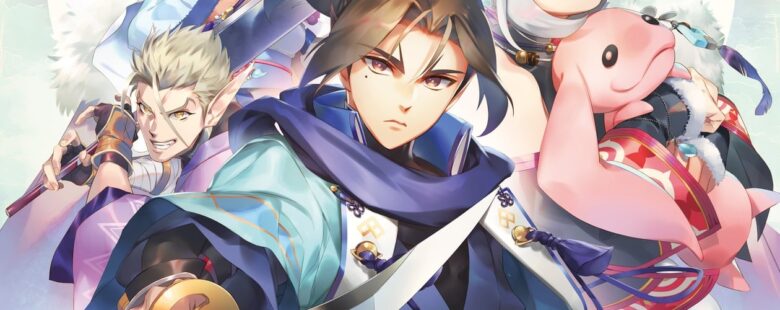For the longest time, I only knew of the Utawarerumono series because certain corners of the fandom jokingly called it Underwater Ray Romano. When I moved past the memes and finally gave the games a shot, though, I was blown away. Ray Romano be damned, these visual novels are amazing! Their tight writing, gorgeous old-school artwork and immersive world-building hooked me, and the tactics-gameplay battles that were sprinkled throughout them helped keep me engaged until the credits rolled.
I talk about this series because, despite not being evident from the title, Monochrome Mobius: Rights and Wrongs Forgotten is a prequel to Utawarerumono: Mask of Deception. Despite sharing a setting, these games do not share genres – Monochrome Mobius eschews the visual-novel tactics hybrid presentation in favor of being a traditional, full-3D turn-based RPG – and Aquaplus’ inexperience with that genre is evident from beginning to end.
The standalone nature of this game’s title implies that Monochrome Mobius is meant for newcomers to the series, and in theory that’s true. The story is kicked off by a young woman named Shunya being cornered by enemy soldiers alongside her father in a mysterious teleporter room. He sends her through the teleporter for her safety, and she arrives in the quiet village of Ennakamuy, where she encounters a local swordsman and town protector named Oshtor. As it turns out, though, Oshtor is Shunya’s brother, and the father he believed to be dead since his youth is in a dire situation. This sends the two off on an adventure to reunite with him before it’s too late.
The thing is, Shunya and Oshtor are characters from Utawarerumono, and many of the other people, creatures, and locales you come across in Monochrome Mobius are present in the main series as well. While they’re given proper introduction in those games, Monochrome Mobius throws a lot of this stuff at you without explanation, forcing you to either accept it all flatly or consult the in-game glossary for more context. Oshtor and Shunya’s story is captivating, but it’s way more special when you have the context of Utawarerumono to frame it all.

The problems with the narrative are only made worse by the gameplay in Monochrome Mobius. An otherwise tightly designed and engaging story is stretched thin by how much of a traditional, repetitive RPG this game aims to be. Battles are frequent, side-quests are rampant, and the grind to earn materials so you can upgrade your weapons and characters is constant.
With this being the first time Aquaplus has made such an expansive 3D RPG, all of these systems are too undercooked to take up so much of the playtime. Combat is just fine, but the frequent mob battles you encounter are so quick that you’ll never be able to explore the full depth of strategy that the game tries to offer you. As a result, major story beats are bogged down with bloated gameplay checks that, especially in the second half of the game, bring the pacing to a grinding halt.

It hurts to say, but Monochrome Mobius even struggles when it comes to visuals. While primary characters have crisp 3D models, town NPCs and background characters are low-poly, under-textured, and barely animated. In some situations, that kind of thing can be incredibly charming and fun, but in this case it just creates a visual disconnect that, coupled with the underwhelming environment art and overdone lighting effects, had me constantly distracted.
If you’re a diehard fan of Utawarerumono, there’s a lot to chew on in Monochrome Mobius that might make it worth picking the game up. It’s really fascinating to get a mirror into the background of Shunya and Oshtor, and approaching so many characters and locations from a new, 3D perspective can be a treat. Just know that you’ll be dealing with plenty of low moments between all of the highs. And if you aren’t a fan of Underwater Ray Romano, I wouldn’t recommend touching Monochrome Mobius until you become one.


